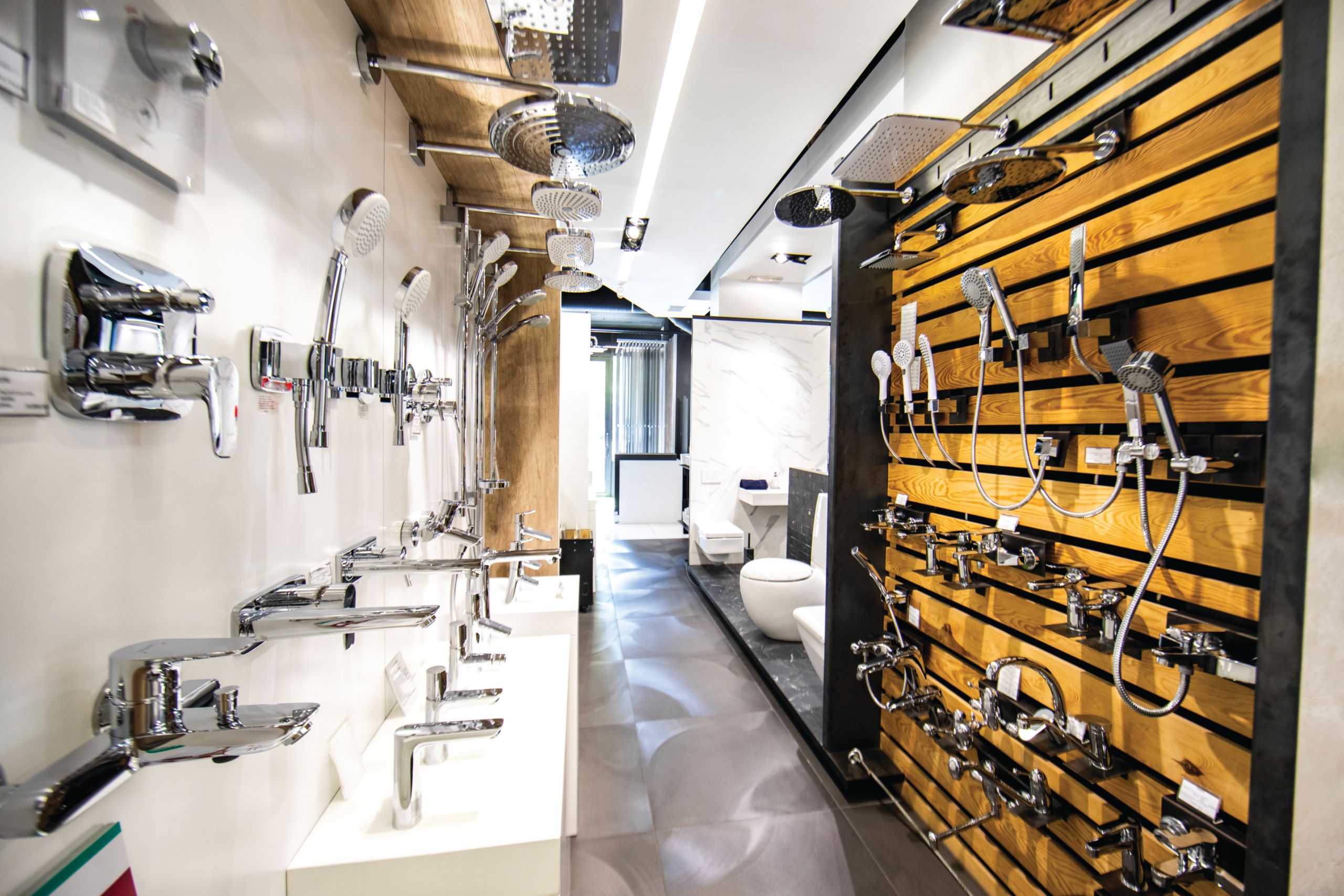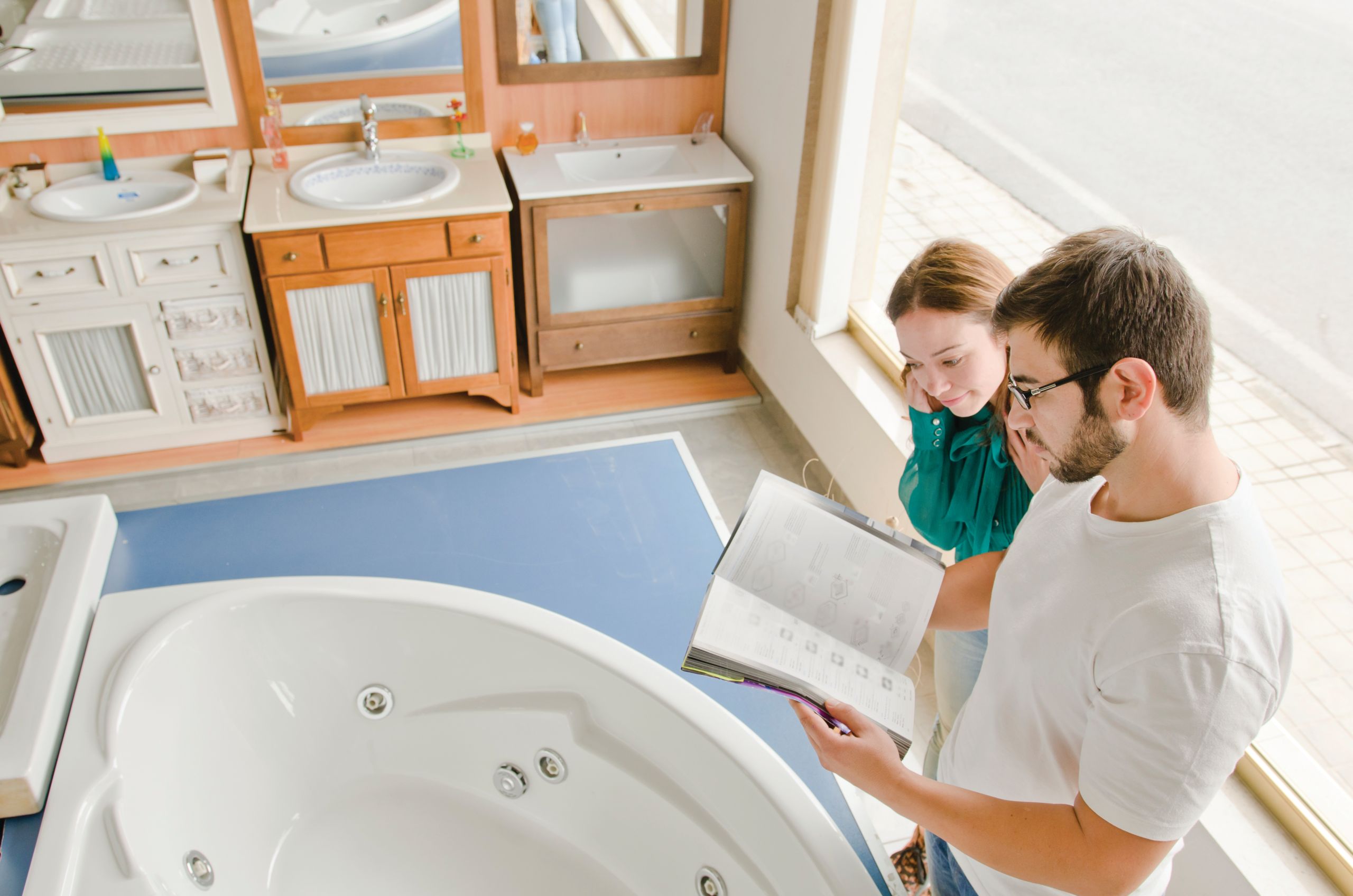I believe that the engagement of plumbers can only help your showroom business—if it is done correctly.
None of us is an island. We—and our organizations—have a much better chance of reaching our performance potential when we surround ourselves with carefully selected people and partners.
For showrooms, those partners include contractors. The contractors with whom we choose to build our businesses can help maximize our showrooms’ opportunities for growth.
I haven’t talked much about the effect of having plumbers work directly with your showrooms because, in recent years, we’ve seen a slow but steady migration away from that old way of doing business. Many showrooms don’t really consider contractors as their customers anymore. They feel as if contractors are leaving product search and selection up to the consumers, who are strictly focused on installation.
Contractors’ disengagement in this process means they’re no longer educating consumers about the benefi ts of working with your showroom and the quality of products you carry or even providing the initial introductions. There is a sense that loyalty to the distribution channel has waned and contractors are happily installing products their customers are sourcing from Amazon or other online retailers, as well as the big-box stores.
While that level of migration is different in all markets, it has had an impact on showrooms. And although targeted digital marketing efforts may be bringing more customers through your doors, I believe that the engagement of plumbers can only help your showroom business—if it is done correctly.

Showroom owners, as well as plumbers, shouldn’t be so arrogant as to believe they have the market locked up or all the business they need. It wasn’t so long ago when the market crash happened, massive layoffs took place across almost every industry and staff level, and people across the country were scrambling to keep their jobs. There are days when I think we are moments away from a repeat of that awful time—so I believe it’s vital that both plumbers and showroom owners understand each other better.
My hope is that showrooms only carry products not sold in home centers and protect themselves from Amazon so they have more control over their profitability. I also hope plumbers recognize the need to have a quality, expert-owned showroom at their disposal and consider showrooms as an extension of their businesses.
These products typically have a higher level of complexity. Consumers will benefit greatly from knowledgeable showroom staff educating them about products and performance while having their chosen products installed by true professionals.
The days of plumbers forcing showrooms to sell at list price are long gone. The days of plumbers telling a showroom to put 50% “on it for them” have died. Finally, I think the fear of protecting the plumber versus having the showroom close because the public is fed up with the pricing games is over.
So, the question is, what are the most effective ways plumbers and showrooms can work together that can grow both their businesses?
Ideas on How to Work Together
Here is what I believe:
- Plumbers should refer their customers to a showroom every time. When they send a customer to a home center, at some point the plumber will run the risk of losing the customer to an installed sales specialist. Home centers are pushing installations with their sales now more than ever. This won’t happen in an independent decorative showroom unless plumbers continue to send their customers to home centers, which could force the hand of showrooms to do the same.
- Plumbers should communicate more with decorative showrooms. They should know what brands or products their local showrooms are promoting, so they, too, are confident in the product quality and how to install the products.
- Showrooms should run events specifically for plumbers to engage them and help educate them on what the showroom can do for them. For example, there should be a meeting space for a plumber to meet with an end user at the showroom privately. There should be access to basic office needs—free Wi-Fi, snacks, printer, etc.—so the plumber can have a remote office if needed.
- Showrooms need to do a better job of reducing friction for the customer and plumber and just sell the product directly to the end user. The plumber will grow his business by the referrals the showroom gives out, not by taking the profit away from the showroom.
- Plumbers should price correctly and profit from the installation of the product and the markup of the rough-in goods. Pricing on decorative goods is too sensitive now to slap on big markups.
- Showrooms need to help manage the job, communicating with the plumber and end user along the way, so no one is left out of the loop.
- Plumbers should have some, yes some, input on the lines in a showroom. At least give them the chance to be heard. You may not know if a product has problems in the field until you speak with the installer.
I am certain I am missing some other key areas in which both sides need to work better together. I look forward to hearing your comments so I can address this issue again in future columns. Just to be clear, I don’t have the silver bullet answer here.

Productivity
One major obstacle in the plumber relationship is the fear of selling upscale products for some of the installers. “I only install Moen and Delta because my dad only installed Moen and Delta,” is an outdated mindset. Just because the installation manual requires some reading doesn’t mean the product is junk.
No, I am not insulting the intelligence of the plumber here. I understand that taking another half hour to fi gure out how something is installed is sometimes a considerable inconvenience. Manufacturers have plenty of video content now, so YouTube is now the plumbers’ best friend. Showrooms should help and give the installer a heads-up when products are complex in design and install.
Another problem for showrooms is that plumbers are in short supply. If there were an influx of young residential plumbers coming into the workforce, I would be much more confident in showrooms’ ability to train the new plumbers on how to work with a showroom. It seems in most markets the professionals are buried in work and don’t have time to build a relationship with a showroom. It may take a substantial downturn in the economy to get this to happen.
A best practice I would love to see is turning downtime in a showroom into something productive. When your showroom is slow, have your showroom staff visit a plumber’s shop to learn more about his/her business or even watch an installation happen. There is no greater value than hands-on learning. When a plumber is slow, instead of sending his/her helper home, maybe he/she should send the helper to the showroom to learn about the struggles you encounter so he/she has a better understanding.
One showroom I’ve visited that caters specifically to the professionals is Immerse in St Louis. Its special sauce is not having retail traffic but instead working purely with the design and trade communities to grow together. While this style of go-to-market isn’t for everyone, it certainly works well for them. The designer or plumber works with the showroom client in the showroom, which is vastly different than most showrooms.
One of the most valuable times in my career was early on when I visited a jobsite and watched a boiler system installation and a complicated shower system install after that. I helped line up and prep fittings for the job and had a much better understanding of flow rates, water pressure and why things work the way they do.
I also had a much better appreciation of the installer and what they had to go through on a remodel versus a new installation. The skill and physical demands are tremendous. The need for the plumber to instill confidence in his customer as well as manage his/her time and inventory on a jobsite—it really is an art.
If contractors know their local showroom, the products they display and are confident in selling, they should be confident in referring customers to your showroom. You will make so much more money and have rave reviews online if you install the dream bath or kitchen without substituting products.
I guess the final thought would be that both the plumber and the showroom don’t need each other anymore. If they do choose to work together, there is an excellent opportunity for growth in business for both companies, as it adds that other “leg on the table” for new business. Just because they don’t need each other, doesn’t mean they shouldn’t coexist well. They should—and like all relationships, they take some work.
Let me make this clear. The plumber will never go extinct. Even in our “push-connect” world, there are still homeowners who are unwilling to take the risk of doing it themselves. But showrooms will become extinct if they provide a terrible experience, so the showrooms must take the lead on this and engage the plumber.
To survive and flourish, showrooms need to have the right mix of retail walk-ins, designers, architects, other kitchen and bath shops and plumbers, as well as some e-commerce, if possible. I see this relationship as a necessary “leg on the table” to keep showrooms viable.